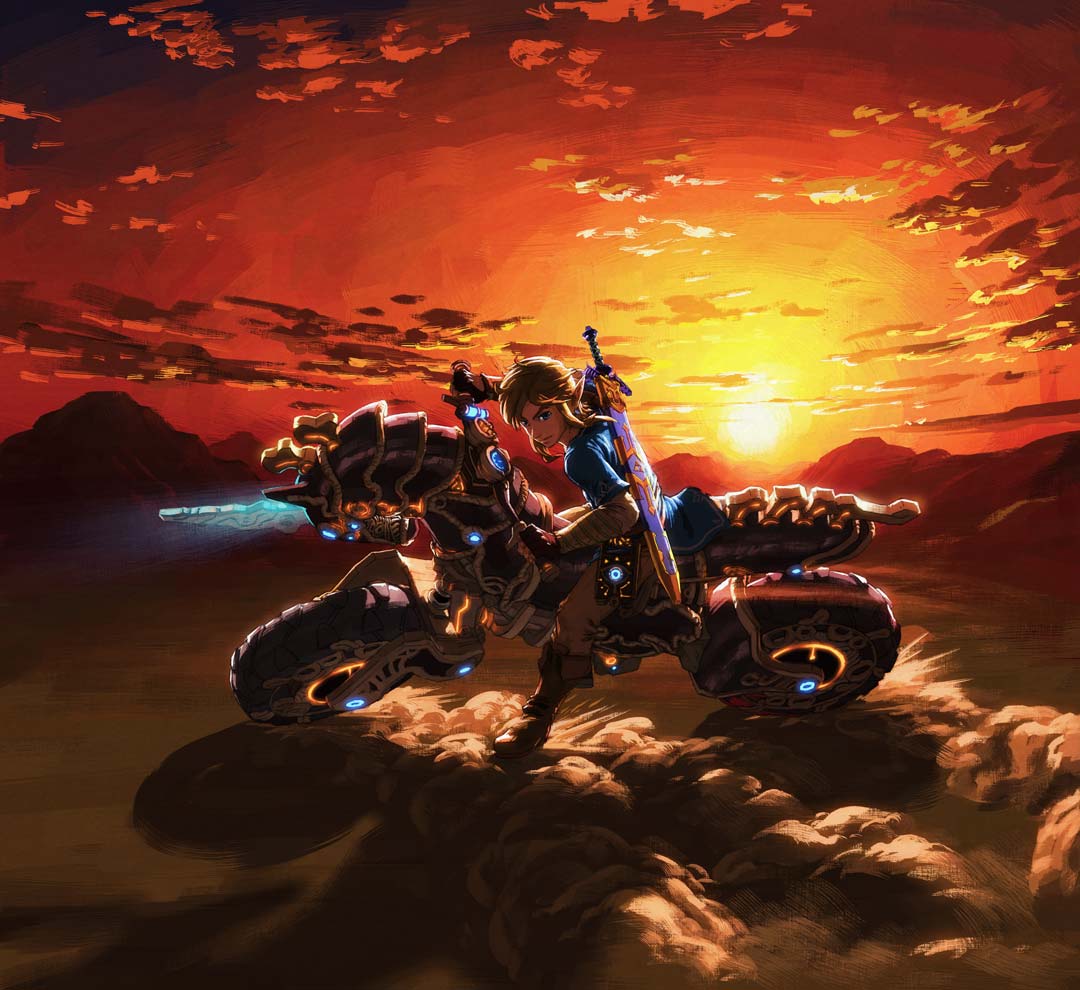
Redbrick Gaming Editors and Writers look back on the last 10 years with fondness and rose-tinted glasses by picking the games of the decade.
The 2010s are at an end, with the gaming industry changing rapidly within that stint and plenty of awesome games across two console generations satisfying our needs. Join us as we recount our favourite games of the decade.
The Legend of Zelda: Breath Of The Wild – Sam Arrowsmith
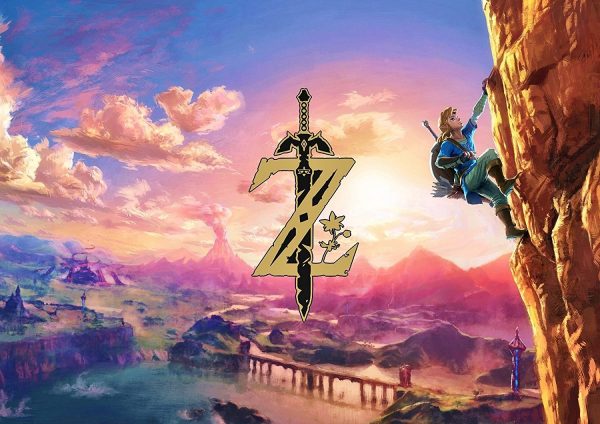
Breath of the Wild is a big deal. No one could dispute that. Open-World games have always had a certain appeal to me, I always love the freedom of having a big map to spend hours just wandering around, taking everything in. Breath of the Wild appeals to that spirit more than almost any Zelda game to come before it.
The map is vast and dynamic, the tedious early game tutorials non-existent. If you feel like it, you can leave the Shrine of Resurrection and go straight to fight Ganon and nobody would stop you (I don’t personally recommend it, but that’s just me). Loadouts are remarkably customisable, with endless weapons, shields, armour, even a Magitek motorbike (which doesn’t feel as out of place as you’d think in a medieval environment). There’s obviously a story that runs through all of this, where Link uncovers the reason he was put into suspended animation 100 years ago, and how that connects to the world he finds himself in now. The revelations you find make for a riveting story, but the true draw is exploration. Nothing beats the thrill of climbing up sheer cliffs and then gliding off them into a gorgeous grassland vista. Then, you can try and catch horses that you can register at a stable to ride in the future or, if horses are too basic, you can try to ride deer, or even bears. You can also experience the thrill of seeing one of the divine dragons: Dinraal, Naydra and Farosh, arcing slowly through the sky, as a hauntingly beautiful soundtrack plays in the background. That’s before you unpack the tools offered by the Sheikah Slate, which can create some epically versatile combinations. YouTube offers many examples of people using the time freezing function on a boulder, hitting said boulder to build up kinetic energy and, when time unfreezes, using the momentum to ride the newly formed missile into the sky. Using the Magnesis function can also create some fun opportunities for sneak attacks. Many a Bokoblin has met an untimely end through being unceremoniously crushed, or else batted off a cliff with a nearby metal sphere.
Combat itself is a lot of fun, with endless creative ways to defeat your adversaries, with many genuinely tough bosses in the open world. It is hard not to hear the frantic music that signals the approach of a Guardian without feeling an urge to run, particularly if you’re still early in the game. Of course, this isn’t just anarchy, as I have mentioned before. There are still the four Divine Beasts serving as the main dungeons, which provide some structure to the story, but even these can be completed in any order. Each one makes the fight with Ganon a lot easier by removing one of the Blights from the order of the final battle.
There are also 136 mini dungeons called shrines scattered across the map. Each one tests your skills and tools to their very limit. They’re immensely satisfying to complete, particularly if it’s a puzzle you’ve been stuck on for ages. This just gives you a flavour of the vast sandbox Nintendo have created, and it rightly ranks among the best Nintendo has to offer. That makes it my Game of the Decade. The 2010s wouldn’t have been the same without it.
Super Smash Bros. Ultimate – Kieren Platts
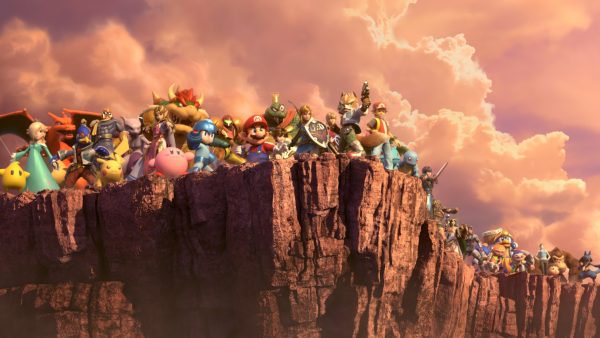
Let’s not undersell what exactly Super Smash Bros. Ultimate is. Apart from being an extraordinarily fun fighting game, with accessible entry for casual players, and a ludicrous competitive scene for professional players, apart from the fact that it became the best-selling fighting game ever eleven months after release – Super Smash Bros. Ultimate is a celebration of games from the 80s, to today. It’s a triple-A passion project, and is the embodiment of the vibrancy and life of computer games.
Ultimate started development in December 2015, shortly after director Masahiro Sakurai sneakily used a fighter ballot to gauge interest for new fighters – not for Smash 4 DLC as was assumed, but for a brand new iteration for a brand new console. Keep in mind, the Switch wouldn’t be announced for another seven months. And that’s how a community that kept dreams of a playable Ridley, a resurrected King K. Rool (after 10 years of absence!) and a reclaimed Banjo Kazooie (18 years away from a Nintendo console!) ended up with their most beloved memories of games being represented by the Smash Bros. family. I’ve written this elsewhere, but it needs reiterating:
81 playable characters, 107 stages, 956 songs, 36 franchises 9 game companies, and over 240 series are present in not insignificant forms. And in a few weeks time, these numbers will need to be updated. Sakurai has directed a dream project, and if his video presentations and creativity in character reveal trailers are anything to go by, he’s loving every moment of it. We’re talking about a man who has worked full-time on Smash Bros. since 2013, single-handedly resurrected Kid Icarus, and treated Solid Snake with more respect than Konami ever will. We live in a world where Nintendo, Gamefreak, Sega, Bandai Namco, Capcom, Konami, Square Enix, Microsoft, Atlus, Platinum, SNK, and who knows who else, are willing to contribute to one single title. Super Smash Bros. Ultimate is a playable hall of fame.
Smash Bros. Ultimate is primarily about fighting, but when you have 81+ playable characters, each standard match plays completely differently to the last, even without factoring in stages, items, and battle styles. Mario Kart has always had it right – make losing just as fun as winning, but Smash has a beautiful approach. The game is chaotically fun to mess around in, addicting to play competitively with friends, and features a high skill-ceiling so high that professional players can make a living off tournaments. A game for everyone, in the truest sense possible.
Sakurai called Ultimate a miracle, very unlikely to happen on this scale ever again. If that’s true, then Super Smash Bros. Ultimate could potentially stand as the epitome of developers, publishers, and players of different skill levels uniting under a game that’s just pure joy to play, with new characters and franchises being added all the time. If so, I might not be looking at my game of the decade – it could be my game of the century.
Minecraft – Sam Nason
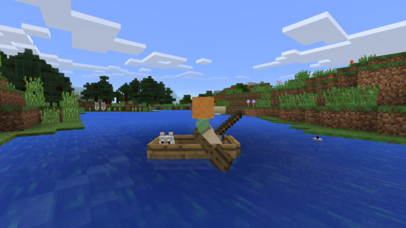
No game has defined the 10’s like Minecraft has. Though released in 2011, it somehow feels like it’s been present for much longer – such is its influence upon this decade. Around my school, Minecraft was always the product of memes and snide ridicule. Classmates had no idea what kind of game they were missing out on; because (secretly) Minecraft has always been fantastically fun, robustly built and an absolute delight to explore.
Minecraft’s initial release was the first time I encountered the term ‘indie game’, and what a foot forward Mojang’s creative sandbox was. While it can’t really be classed as such nowadays, Minecraft was my first exposure to a game that wasn’t pumped with money, didn’t look glamorous, was only modestly advertised – and yet hit the world by storm. Of course, modern day Minecraft defies each of these factors, but that is just a testament to the success and influence of such an innovative game.
Most are familiar with the various ways one can ‘Minecraft’. My personal favourite is in its creative mode, where you are given free reign to build to your heart’s content with a huge variety of blocks, contraptions and AI to place into your world. There’s something beautifully therapeutic about constructing a model village, visiting another user’s creations, or even trying to replicate your own neighbourhood in-game (that was a long weekend). C418’s music playing in the background makes what some might consider a monotonous task, mesmerising. The electronic twangs of each track say something different and are fantastic to build to.
Of course, this isn’t the only aspect of the game to enjoy. Minecraft also boasts its more objective-based, perhaps more popular survival mode, which sees you begin with nothing but your fists as you explore, build and battle your way through an incredibly vast, diverse and randomly generated world. Many became introduced to this mode through Youtube creators, yet hence lies the beauty of the mode – that each survival adventure is different, and will always offer a unique experience to each intrepid explorer.
Perhaps most recognisable about Minecraft is its look. The game’s graphics are – dare I say – iconic, showcasing the beauty of a stylised world over attempts to appear more ‘realistic’, something that still remains relevant today. Minecraft is an example of a game with such a solid premise and enjoyable execution that its graphical capabilities almost becoming irrelevant; handy, due to the amount of devices this game has cropped up on.
At this point, Minecraft is essentially a platform. No matter where or what you’re playing on, a huge community innovating with boundless mechanics is waiting. One look at Minecraft’s Wikipedia page shows the scale of its evolution – and what’s pressing is that its fanbase appears to have grown with it. For a game with such a colourful aesthetic and family appeal, it may be easy for some to dismiss it as superficial or ‘for kids’, like those at my school used to. But the fact it has maintained its appeal while welcoming many new creators to the fold is a testament to the masterful gameplay and accessibility of a game that will define the next decade like it did this one.
The Last Of Us – Ellen Hill
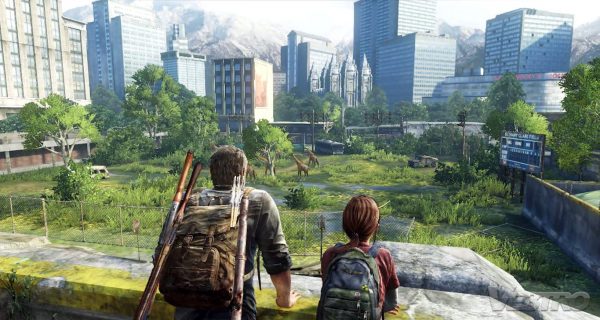
Who could forget one of the most heart-wrenching tutorial sequences that left us all devastated. Within the first half-an-hour you experience a mixture of intense fear, adrenaline, and emotional suffering as you rush to escape the initial outbreak of an apocalyptic infection that transforms humans into zombie-like creatures (the Infected). The main story of The Last of Us follows the journey 20 years later of Joel and Ellie, an unlikely partnership between a broken father and optimistic young girl, as they trek across post-apocalyptic America in hopes of a cure. This relationship becomes the focal point of your gameplay, with moments of spontaneous dialogue and emotional cutscenes emphasising their strong paternal bond, even in their early interactions.
The realistic characterisation and importance placed on family sets The Last of Us wildly apart from other survival games – you become so heavily invested in Joel and Ellie, in their success and their well-being that they become almost like your family. This is what makes the final chapter so harrowing. This year-long journey, tens of hours of gameplay, culminates in a revelation that so perfectly parallels the devasting opening, and in that moment you are not simply a player controlling a character in a video game but you become Joel, experiencing his emotional turmoil as he desperately tries to prevent the past from repeating itself. This genuine connection between the player and the main characters is developed subtly throughout the game. The variety of confrontations you face with both Infected and other humans, from dark sewers and underground metros to abandoned towns or expansive forest, means it never feels like you’re just repetitively killing enemies for the sake of moving the plot forwards. Every sequence has weight and meaning: it reveals something about the main characters or about life post-infection, immersing you deeper into their world.
Despite not feeling like your typical horror game, The Last of Us features some of the most genuinely terrifying enemy encounters I have ever experienced. The variation in combat situations, from stealthily picking off enemies one by one to being charged by packs of Infected, provides an interesting game dynamic that leaves you constantly on edge even during apparent moments of peace, echoing the experience of the characters you play as. This level of immersion and realism, where your priority is simply to survive scene-to-scene, protecting those you love at all costs, makes The Last of Us so special. It’s one of the rare RPGs where the story hasn’t become lost in the gameplay, but it enhanced by it. The personal connection you develop with the story and the characters, combined with the stunning visuals and challenging action sequences, leave players wanting for very little and is why it’s my game of the decade.
Portal 2 – Alex Green
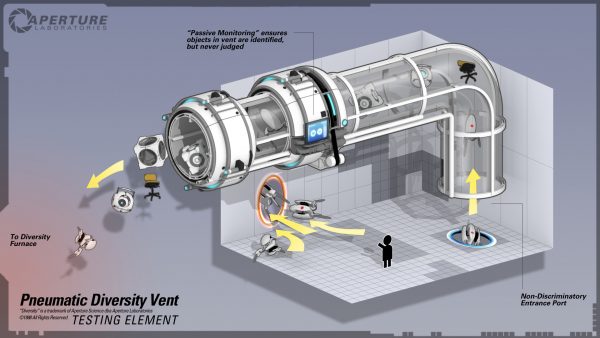
Few games this decade have achieved what they set out to accomplish so brilliantly and confidently as Portal 2. Since its release in 2011, we’ve had a haul of great games, but Portal 2 still is as enjoyable to play in 2019 as it was eight years ago. Finding a criticism is near impossible.
One of the greatest testaments to Valve’s puzzle sequel is how it avoids every pitfall imaginable for a puzzle game. The learning curve is excellently plotted as the game progresses and steadily introduces new mechanics such as the propulsion and repulsion gels. The variation in puzzles late on and the increase in scale prevent the gameplay from becoming formulaic. Signposting of how to complete the puzzles are perfectly balanced to make the game accessible to the player whilst not revealing the crux of the puzzle too much.
On top of the masterful puzzle design and expertly paced gameplay, the story is one of the most satisfying of the decade. Every aspect of it works. GLaDOS returns and continues her signature dry humour and even gets surprising character development. Stephen Merchant brings his typically oafish comedy to Wheatley, who proves to be a perfect fit to the writing of the game’s comedy. We even get to hear from Cave Johnson voiced by the typically amazing J.K Simmons. Less pictures of Spiderman here, more ranting about lemons. It’s an underrated and supremely done role.
Perhaps the most surprising aspect of Portal 2 is the ingenious addition of multiplayer. For a series that always seemed perfectly suited to a single-player experience, it breaks out of the confines to provide a whole new set of puzzles that change up the dynamic nicely with the addition of a friend but don’t hurt the core gameplay at all. That’s a rare feat for any game in any genre this decade, let alone the puzzle genre. We’ve seen numerous series try to add multiplayer to varying degrees of success (Dragon Age and XCOM come to mind in this regard) but Portal 2 did it so seamlessly that it feels like a natural fit.
Even in 2019, the game’s visual style with the clinical white walls of Aperture Science Labs combined with its disused inner workings have prevented it from aging when it comes to the eye test. With the support of the Steam Workshop adding additional content and the effortlessly replayable core game, Portal 2 is a genuine timeless classic. Seeing it fire on all cylinders and hardly making a misstep is one thing. Doing that and being so absurdly fun is another. So as we head into the new decade, let me quote GLaDOS herself when I say: “I hope we can put all our differences behind us. For science. You monster.”
Super Mario Galaxy 2 – Geoffrey Niu
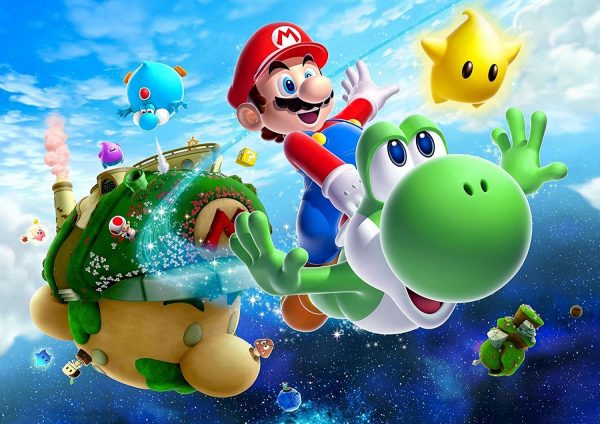
Mario’s 3D outings have historically been some of the most defining games of all time. The task of following on after the cataclysmically acclaimed Super Mario 64 and Super Mario Sunshine was hardly the envy of developers, but it was always inevitable for Mario to eventually grace the Wii in a flagship title. Super Mario Galaxy was an astounding fresh and creative experience for a 3D platformer, the level of which many thought could never be superceded. It’s still lauded as one of the greatest games of all time, between the crisp handling, gorgeous environments and worlds, and an absolutely killer orchestral soundtrack. Galaxy sat so far beyond the gold standard it was truly unfair.
And then they did it again.
If one could somehow consider the first Galaxy a test run, its sequel was the full realisation of what could be achieved with their concept. The level designs and new powerups pushed the gravity-bending mishaps to its limits, maintaining the standard achieved before and stretching for that last ounce of polish. The sheer amount of charm and joy to be found packed onto the disc is astounding, with a newly rescored soundtrack with new planets and returning ones alike. Though Odyssey has come and gone since, Galaxy 2 holds its place as a monumental landmark for 3D platforming and my pick of the litter of the last decade.
The Honourable Mentions
Sam Arrowsmith – Spiderman, Super Mario 3D Land
Kieren Platts – Fallout: New Vegas, Minecraft
Ellen Hill – Fallout: New Vegas, Slenderman
Alex Green – Life Is Strange, Child Of Light
Geoffrey Niu – Celeste, Warframe
Check out other Redbrick Picks here:
Comments